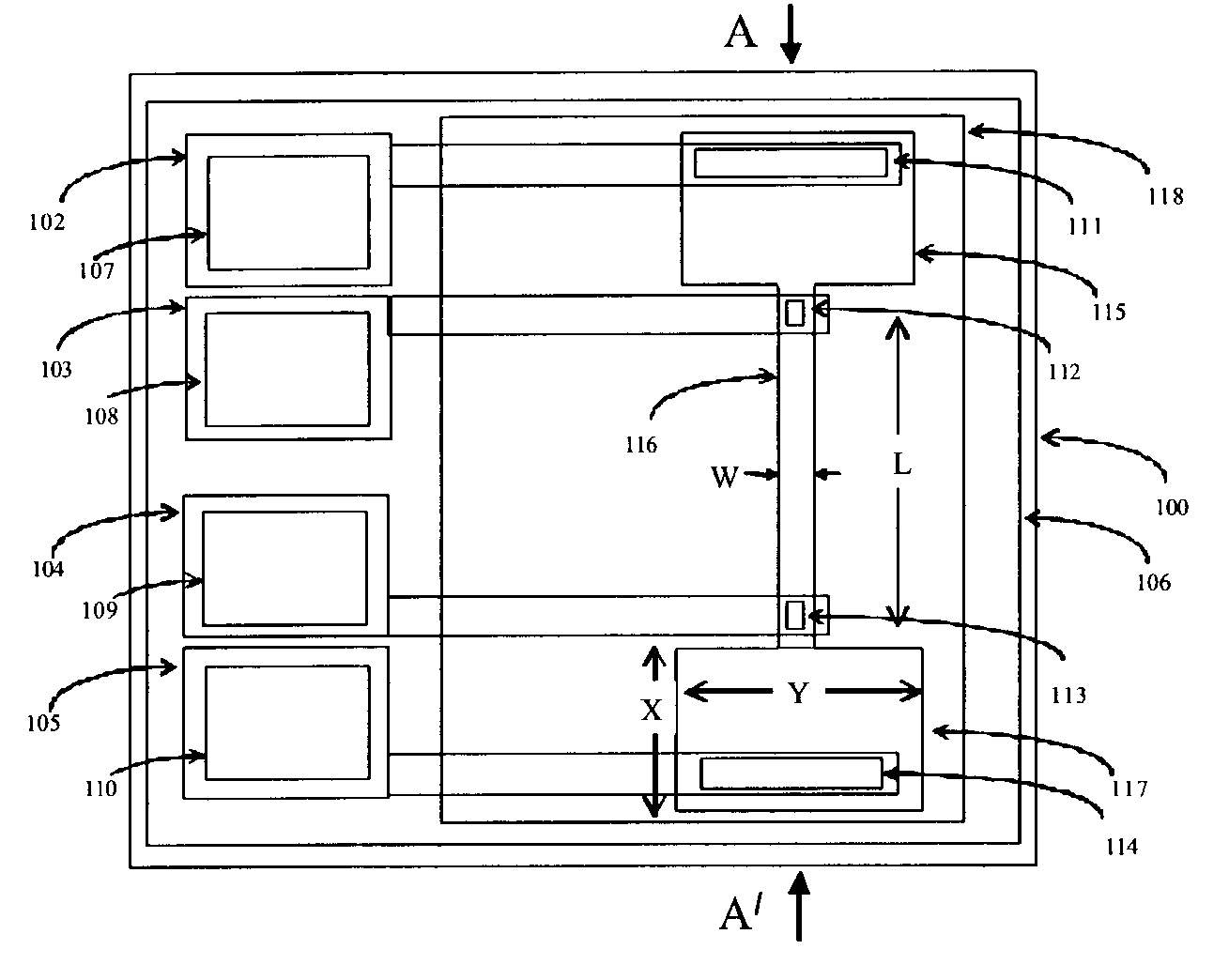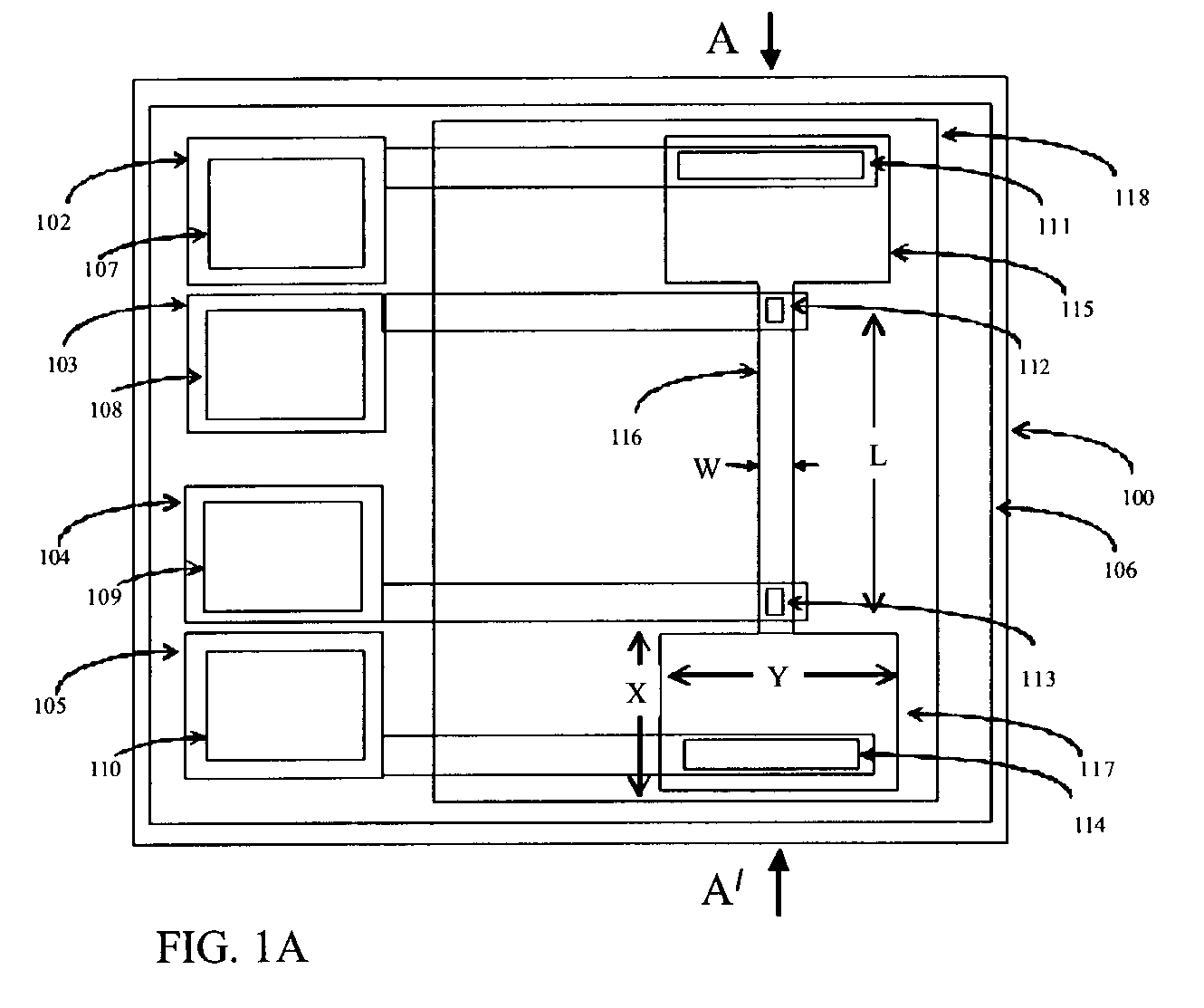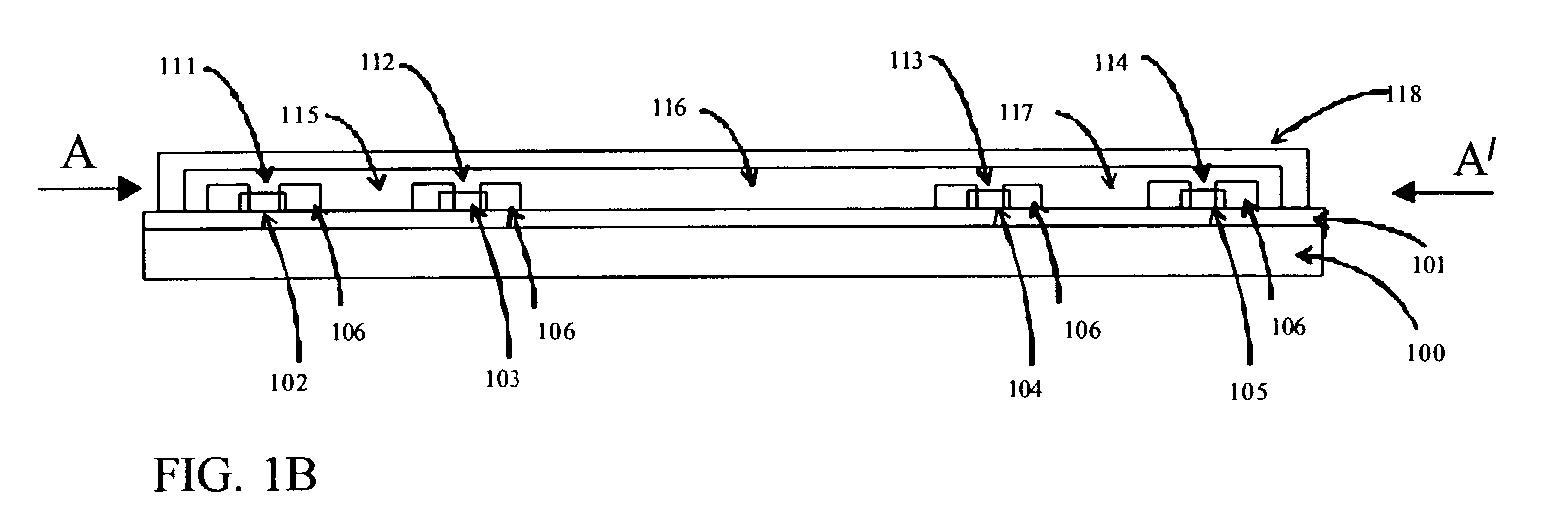Integrated solid-phase hydrophilic matrix circuits and micro-arrays
- Summary
- Abstract
- Description
- Claims
- Application Information
AI Technical Summary
Benefits of technology
Problems solved by technology
Method used
Image
Examples
experiment i
[0163]We evaluated device number 1 of Table 4. An aqueous solution of 2 mM phosphate buffer was introduced into chamber 208, water into central chamber 209 and the effluent chamber 210 was initially empty. A voltage was applied between large electrode 217 (which contacted the hydrophilic matrix path close to source chamber 208) and electrode 216 which contacted the hydrophilic matrix in the transport path with a contact of 500 micrometer×500 micrometer dimensions. The applied voltage provided the power to drive electro-kinetic flow of electrolyte along the path. Electrodes 215 and 218 were connected to electrometers to probe the voltage at different locations along the path. When the applied voltage was at +10V on 217 relative to 0V at 216 (the voltage drop across the transport path was 6V), electrode 316 polarization was 1.5V, electrode 317 polarization was 0.5 V and the current was 2 micro-amps. There was fluid flow along the path from the filled source chamber 208 into the initia...
experiment ii
[0168]We have investigated the use of surfactants to tailor the zeta potential of micro-porous materials. In transport experiments on device 2 of Table 4 we found that untreated micro-porous cellulose acetate / cellulose nitrate matrix has a low zeta potential due to fixed negative charge on the pore surface and some electro-osmotic pumping takes place. We obtained similar results on transport experiments performed on device 7 of the table which comprised solution-cast, micro-porous cellulose acetate.
[0169]When we incorporated a non-ionic surfactant such as Triton TX-100 into the hydrophilic matrix (devices 3 and 5 of Table 4) the adsorption of non-ionic surfactant on the pore surface was found to suppress the zeta potential and the micro-porous material becomes less active to electro-osmotic pumping. We observed the fastest flow of anionic red dye by electrophoresis only. Comparing the mobilities observed in the transport experiments on devices 3 and 5 showed lower electrophoretic an...
PUM
| Property | Measurement | Unit |
|---|---|---|
| Thickness | aaaaa | aaaaa |
| Diameter | aaaaa | aaaaa |
| Diameter | aaaaa | aaaaa |
Abstract
Description
Claims
Application Information
 Login to View More
Login to View More - R&D
- Intellectual Property
- Life Sciences
- Materials
- Tech Scout
- Unparalleled Data Quality
- Higher Quality Content
- 60% Fewer Hallucinations
Browse by: Latest US Patents, China's latest patents, Technical Efficacy Thesaurus, Application Domain, Technology Topic, Popular Technical Reports.
© 2025 PatSnap. All rights reserved.Legal|Privacy policy|Modern Slavery Act Transparency Statement|Sitemap|About US| Contact US: help@patsnap.com



